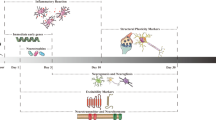Abstract
There is often a mismatch for bilateral cochlear implant (CI) users between the electrodes in the two ears that receive the same frequency allocation and the electrodes that, when stimulated, yield the same pitch. Studies with CI users who have extreme mismatches between the two ears show that adaptation occurs in terms of pitch matching, reducing the difference between which electrodes receive the same frequency allocation and which ones produce the same pitch. The considerable adaptation that occurs for these extreme cases suggests that adaptation should be sufficient to overcome the relatively minor mismatches seen with typical bilateral CI users. However, even those with many years of bilateral CI use continue to demonstrate a mismatch. This may indicate that adaptation only occurs when there are large mismatches. Alternatively, it may indicate that adaptation occurs regardless of the magnitude of the mismatch, but that adaptation is proportional to the magnitude of the mismatch, and thus never fully counters the original mismatch. To investigate this, six bilateral CI users with initial pitch-matching mismatches of less than 3 mm completed a pitch-matching task near the time of activation, 6 months after activation, and 1 year after activation. Despite relatively small initial mismatches, the results indicated that adaptation still occurred.





Similar content being viewed by others
References
Aronoff JM, Freed DJ, Fisher LM, Pal I, Soli SD (2011) The effect of different cochlear implant microphones on acoustic hearing individuals ’ binaural benefits for speech perception in noise. Ear Hear 32:468–484
Aronoff JM, Padilla M, Stelmach J, Landsberger DMDM (2016a) Clinically paired electrodes are often not perceived as pitch matched. Trends Hear 20:1–9. https://doi.org/10.1177/2331216516668302
Aronoff JM, Shayman C, Prasad A, Suneel D, Stelmach J (2015) Unilateral spectral and temporal compression reduces binaural fusion for normal hearing listeners with cochlear implant simulations. Hear Res 320:24–29
Aronoff JM, Stelmach J, Padilla M, Landsberger DM (2016b) Interleaved processors improve cochlear implant patients’ spectral resolution. Ear Hear 37:e85–e90. https://doi.org/10.1097/AUD.0000000000000249
Bronkhorst AW, Plomp R (1988) The effect of head-induced interaural time and level differences on speech intelligibility in noise. J Acoust Soc Am 83:1508–1516
Dunn CC, Noble W, Tyler RS, Kordus M, Gantz BJ, Ji H (2010) Bilateral and unilateral cochlear implant users compared on speech perception in noise. Ear Hear 31:296–298
Firszt JB, Koch DB, Downing M, Litvak L (2007) Current steering creates additional pitch percepts in adult cochlear implant recipients. Otol Neurotol 28:629–636. https://doi.org/10.1097/01.mao.0000281803.36574.bc
Francart T, Wouters J (2007) Perception of across-frequency interaural level differences. J Acoust Soc Am 122:2826–2831. https://doi.org/10.1121/1.2783130
Goupell MJ, Stoelb C, Kan A, Litovsky RY (2013) Effect of mismatched place-of-stimulation on the salience of binaural cues in conditions that simulate bilateral cochlear-implant listening. J Acoust Soc Am 133:2272–2287. https://doi.org/10.1121/1.4792936
Hu H, Dietz M (2015) Comparison of interaural electrode pairing methods for bilateral cochlear implants. Trends Hear 19:233121651561714. https://doi.org/10.1177/2331216515617143
Kan A, Stoelb C, Litovsky RY, Goupell MJ (2013) Effect of mismatched place-of-stimulation on binaural fusion and lateralization in bilateral cochlear-implant users. J Acoust Soc Am 134:2923–2936. https://doi.org/10.1121/1.4820889
Landsberger DM, Srinivasan AG (2009) Virtual channel discrimination is improved by current focusing in cochlear implant recipients. Hear Res 254:34–41. https://doi.org/10.1016/j.heares.2009.04.007
Lazard DS, Marozeau J, McDermott HJ (2012) The sound sensation of apical electric stimulation in cochlear implant recipients with contralateral residual hearing. PLoS One 7:e38687. https://doi.org/10.1371/journal.pone.0038687
Long CJ, Eddington DK, Colburn HS, Rabinowitz WM (2003) Binaural sensitivity as a function of interaural electrode position with a bilateral cochlear implant user. J Acoust Soc Am 114:1565–1574
MacKeith NW, Coles RR (1971) Binaural advantages in hearing of speech. J Laryngol Otol 85:213–232
Poon BB, Eddington DK, Noel V, Colburn HS (2009) Sensitivity to interaural time difference with bilateral cochlear implants: development over time and effect of interaural electrode spacing. J Acoust Soc Am 126:806–815. https://doi.org/10.1121/1.3158821
Reiss LA, Gantz BJ, Turner CW (2008) Cochlear implant speech processor frequency allocations may influence pitch perception. Otol Neurotol 29:160–167. https://doi.org/10.1097/mao.0b013e31815aedf4
Reiss LA, Lowder MW, Karsten SA et al (2011) Effects of extreme tonotopic mismatches between bilateral cochlear implants on electric pitch perception: a case study. Ear Hear 32:536–540. https://doi.org/10.1097/AUD.0b013e31820c81b0
Reiss LAJ, Fowler JR, Hartling CL, Oh Y (2018) Binaural pitch fusion in bilateral cochlear implant users. Ear Hear 39:390–397. https://doi.org/10.1097/AUD.0000000000000497
Reiss LAJ, Ito RA, Eggleston JL, Liao S, Becker JJ, Lakin CE, Warren FM, McMenomey SO (2015) Pitch adaptation patterns in bimodal cochlear implant users: over time and after experience. Ear Hear 36:E23–E34
Rom DM (1990) A sequentially rejective test procedure based on a modified Bonferroni inequality. Biometrika 77:663–665. https://doi.org/10.1093/biomet/77.3.663
Stelmach J, Landsberger DM, Padilla M, Aronoff JM (2017) Determining the minimum number of electrodes that need to be pitch matched to accurately estimate pitch matches across the array. Int J Audiol 56:894–899. https://doi.org/10.1080/14992027.2017.1346302
Svirsky MA, Fitzgerald MB, Sagi E, Glassman EK (2015) Bilateral cochlear implants with large asymmetries in electrode insertion depth: implications for the study of auditory plasticity. Acta Otolaryngol 135:354–363. https://doi.org/10.3109/00016489.2014.1002052
Vermeire K, Landsberger DM, Van de Heyning PH et al (2015) Frequency-place map for electrical stimulation in cochlear implants: change over time. Hear Res 326:8–14. https://doi.org/10.1016/j.heares.2015.03.011
Wightman FL, Kistler DJ (1997) Monaural sound localization revisited. J Acoust Soc Am 101:1050–1063
Acknowledgments
We thank our participants for their time.
Funding
This work was supported by NIH/NIDCD grant R03-DC013380.
Author information
Authors and Affiliations
Corresponding author
Ethics declarations
The procedures were approved by the institutional review board for the University of Illinois at Urbana-Champaign and all participants gave informed consent prior to participation.
Conflict of Interest
The authors declare that they have no conflict of interest.
Additional information
Publisher’s Note
Springer Nature remains neutral with regard to jurisdictional claims in published maps and institutional affiliations.
Rights and permissions
About this article
Cite this article
Aronoff, J.M., Staisloff, H.E., Kirchner, A. et al. Pitch Matching Adapts Even for Bilateral Cochlear Implant Users with Relatively Small Initial Pitch Differences Across the Ears. JARO 20, 595–603 (2019). https://doi.org/10.1007/s10162-019-00733-3
Received:
Accepted:
Published:
Issue Date:
DOI: https://doi.org/10.1007/s10162-019-00733-3




